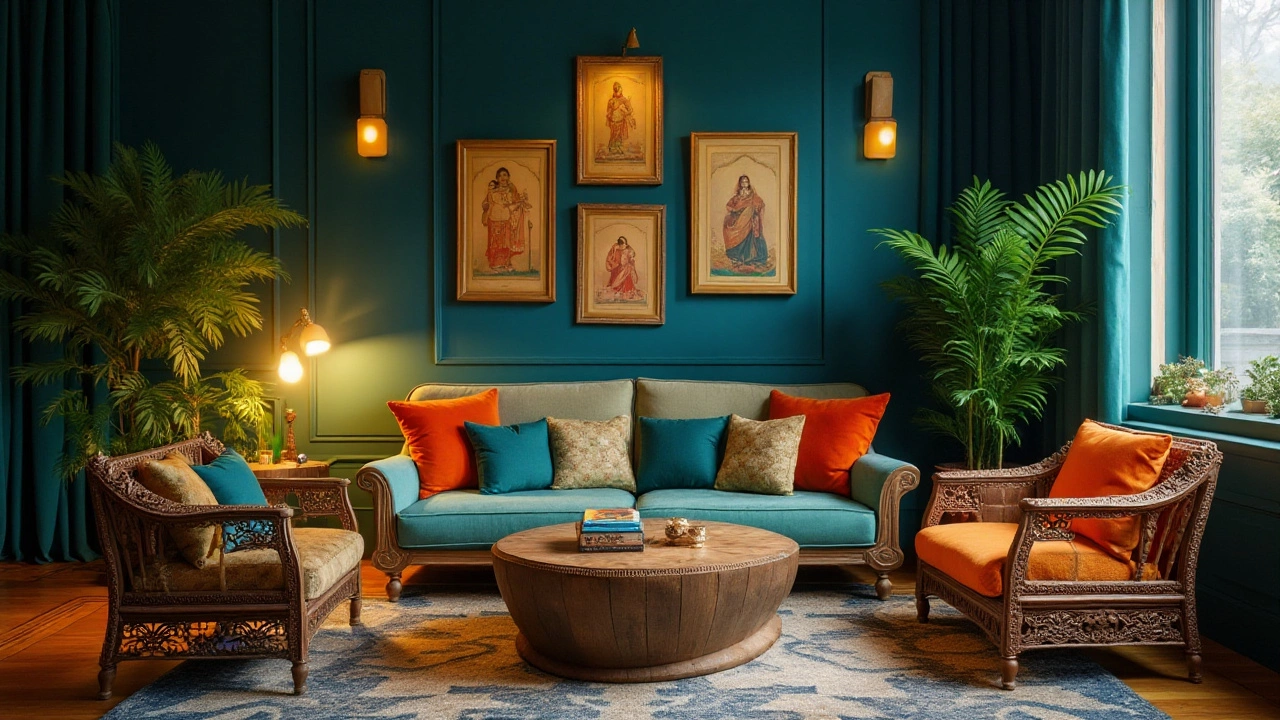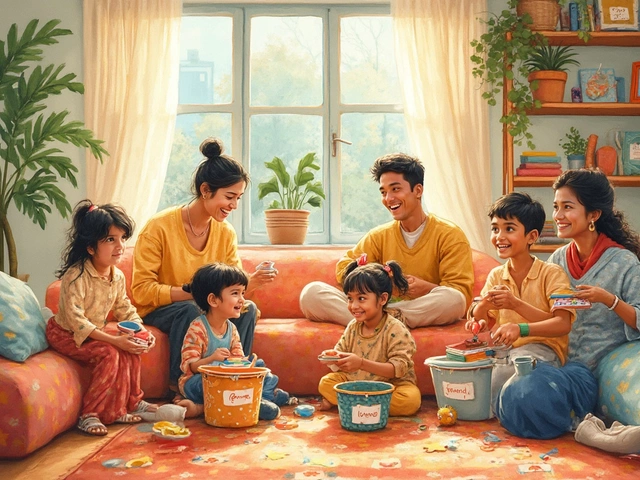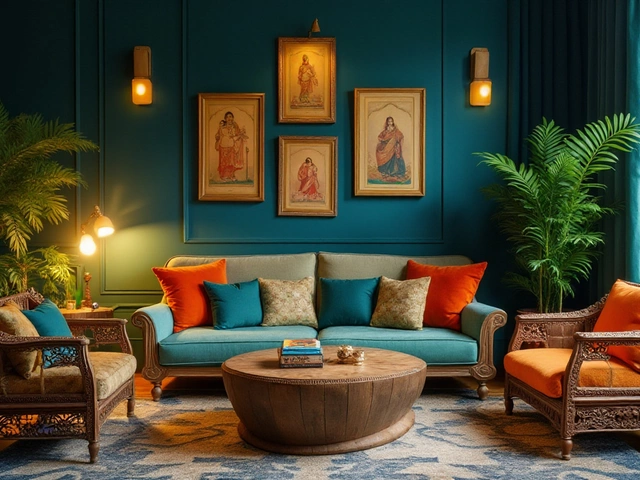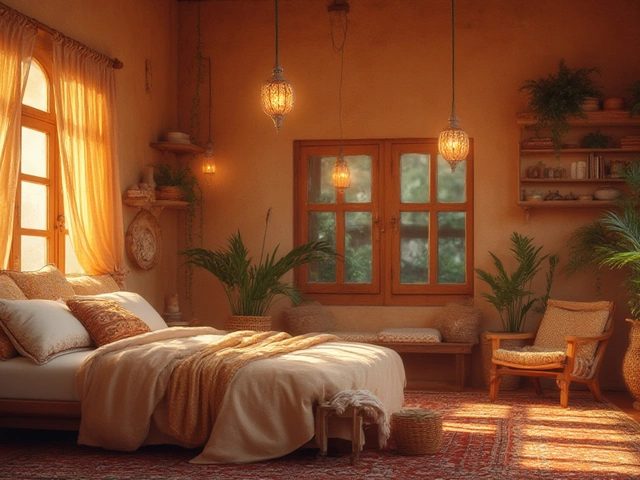Transforming your living room into a sanctuary of style and comfort may seem daunting, but breaking it down into manageable steps can make the process enjoyable and rewarding. Every great room transformation begins with the fundamentals: color palette, furniture arrangement, and a keen eye for detail.
Choosing the right colors sets the stage for the entire room's ambiance—do you seek tranquility, vibrancy, or a cozy middle ground? Once the hues are chosen, furniture arrangement can make or break flow and usability, striking a crucial balance between form and function.
Don’t underestimate the power of textures and patterns; they add depth and interest. Accessories allow your personality to shine through, transforming a simple room into a unique space that speaks to you.
Finally, achieving the ideal lighting involves layering lights to create a warm, inviting atmosphere. From small changes to complete overhauls, with these steps in mind, you can rekindle your living room’s charm and utility.
- Choosing the Right Color Palette
- Arranging Furniture for Function and Flow
- Incorporating Textures and Patterns
- Accessorizing to Reflect Personal Style
- Mastering the Art of Lighting
Choosing the Right Color Palette
Creating the perfect color palette for your living room decor is an endeavor that impacts everything from the mood of the space to the perception of its size. Often, deciding on a palette seems overwhelming due to the myriad of choices available, but by focusing on a few essential principles, you can simplify and enjoy the process. Begin by considering the emotional tone you wish to set—colors are known to evoke specific feelings. For instance, blues and greens often bring to mind feelings of tranquility and relaxation, making them ideal for a peaceful living room. Alternatively, if you want your space to feel energetic or cozy, brighter hues like oranges and reds may serve your needs better.
It’s crucial to account for the existing elements within your home that might already suggest a specific direction for your palette. Look at permanent fixtures such as flooring, large furniture pieces, or a stunning feature wall you’d like to retain or highlight. These can serve as your starting point, with complementary or contrasting colors building the broader scheme from there. Remember, continuity through connected spaces can bring cohesion to multi-room designs, creating visual harmony throughout your home.
The 60-30-10 rule is a tried-and-tested formula applied by designers worldwide to achieve a balance that is visually pleasing. This rule suggests that you'll use three colors in a specific proportion: 60% of a dominant color, often used for walls and major furnishings; 30% is a secondary color found in upholstery or smaller furniture; and 10% is an accent color reserved for accessories like throw pillows and artwork. These proportions help distribute color evenly, preventing any single hue from overpowering the room.
“Color is the place where our brain and the universe meet.” — Paul Klee
It’s also wise to consider how natural and artificial lighting affect colors. Shades can look different in morning light, at dusk, and under artificial illumination, making test swatches an invaluable tool. Sample these colors on your wall and observe how they transform throughout the day. This step ensures that you choose a palette that retains the desired effect across varying lighting conditions.
Interestingly, a global study by the International Sleep Products Association revealed that 31% of homeowners feel more relaxed in rooms painted in blue tones. This statistic illustrates the psychological impact of color choices on our daily well-being. By aligning your palette with your personal preferences and lifestyle needs, you optimize both aesthetic appeal and function.
- Consider your existing decor's permanence as it guides foundational palette choices.
- Utilize the 60-30-10 rule to balance your color distribution effectively within the space.
- Account for lighting conditions which can dramatically alter color perception and impact ambiance.
- Incorporate colors that resonate with your emotional and aesthetic goals for the living room.
- Experiment with swatches to ensure the chosen hues work harmoniously throughout the day.
Arranging Furniture for Function and Flow
Getting the right furniture arrangement is crucial in creating a living room that is both functional and aesthetically pleasing. It's about making the space feel open and inviting, while ensuring that it serves its purpose. One of the first steps is to consider the room’s purpose. Whether the main activity is TV-watching, entertaining guests, or family games, understanding the room's primary function helps determine the focal point of your space. From there, you can arrange furniture to enhance that focus. For instance, if your living room is centered around entertainment, positioning seating to face the television is paramount. Allowing traffic to flow smoothly between seating areas encourages interaction and comfort.
A pro tip often shared by interior designers is the importance of starting with the largest piece of furniture, typically the sofa. Use it as the anchor and arrange smaller pieces around it. When dealing with a smaller space, considering multi-functional furniture like a pull-out couch or storage ottoman can maximize your living room's potential without sacrificing style. Meanwhile, creating zones by using rugs or different types of lighting can define certain areas within the open-plan living room, adding depth and clarity.
The Importance of Conversation Areas
One common mistake is pushing all furniture against the walls, which can make a room feel less cohesive. In reality, pulling furniture into groups can create inviting and intimate conversation areas. Opt for modular pieces or arrange chairs in a way that faces each other to encourage social interaction. A low coffee table in the center of a seating group offers a perfect spot for drinks and snacks, facilitating natural conversation. This setup invites people to sit and chat, making the room more than just a pass-through space."Your home should tell the story of who you are and be a collection of what you love" — Nate Berkus, a well-known interior designer.
Practical Tips for Balance and Space
Achieving balance is another core principle of effective furniture arrangement. This doesn't necessarily mean symmetry; rather, it's about equal distribution of visual weight throughout the room. If you have a large, dark sofa, pair it with smaller, lighter objects like metallic lamps or glass-topped tables to create an equilibrium. Always leave enough space for movement, maintaining at least 18 inches between coffee tables and seating for ease of movement.Home styling experts also emphasize the need to consider lighting as part of the furniture arrangement process. Illumination plays a pivotal role in defining how areas are used, so layer a combination of ambient, task, and accent lighting to showcase your living room decor effectively. For example, floor lamps next to armchairs can ensure cozy reading zones, while dimmer switches can quickly change the room's mood.
Drawing from insight into classic interior design principles and everyday functionalities, arranging living room furniture with a focus on function and flow can turn your living room into a space that is stylish, practical, and truly yours.
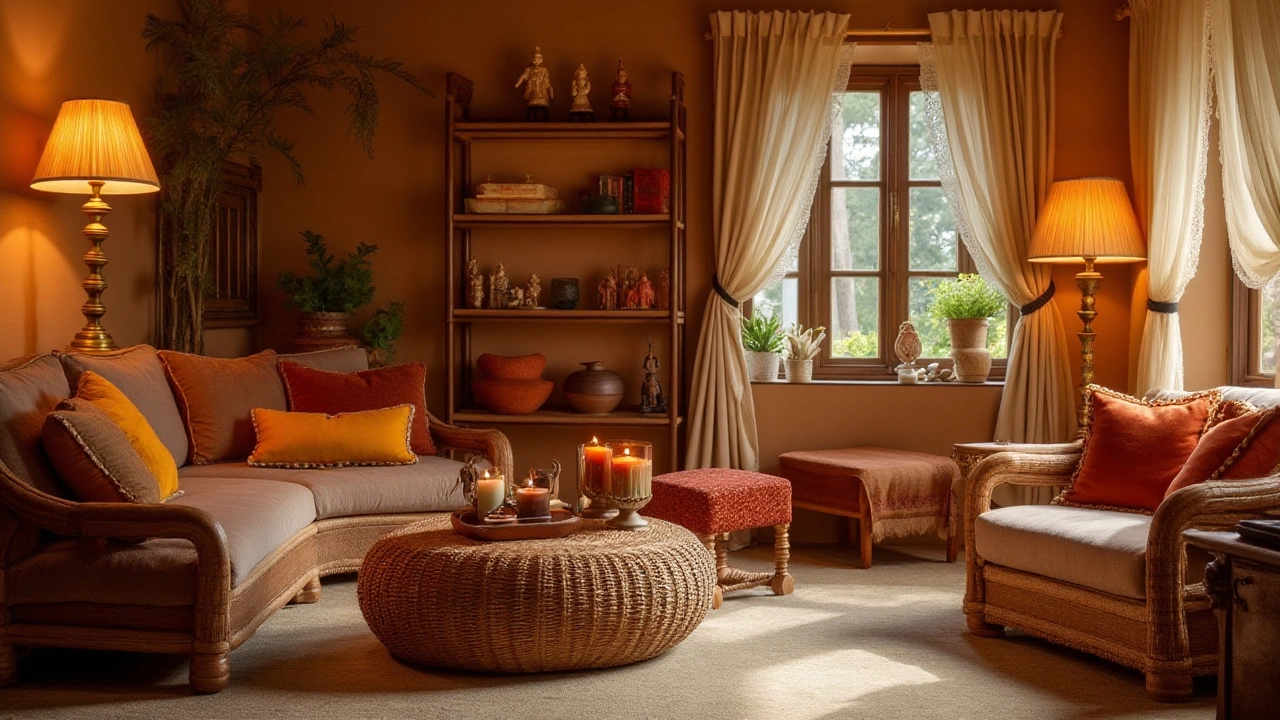
Incorporating Textures and Patterns
The art of living room decor is deeply enriched by the clever use of textures and patterns, which brings visual intrigue and depth to any space. Textures can be thought of as the silent heroes in design, subtly influencing the tactile experience of a room. From soft, plush fabrics that invite relaxation to rough, industrial surfaces that add an edgy character, the interplay between different textures creates a multi-dimensional feel. Incorporating textures can be as straightforward as layering a woven throw over a smooth leather couch or adding a knobby rug underfoot to contrast with polished wooden floors. Patterns, on the other hand, are the storytelling elements of interior design, capable of evoking emotions and setting the tone.
When selecting patterns, think of them as visual statements. Stripes can elongate a space, making it feel larger than it is, while bold geometric prints add a modern touch. Floral designs bring a touch of nature indoors, infusing warmth and elegance. Mixing patterns might seem intimidating, yet when done correctly, it unlocks an array of stylistic possibilities. The key is to maintain a cohesive color scheme across your home styling efforts. An effective strategy is to blend large-scale patterns with smaller ones to avoid overwhelming the eye, keeping in mind the scale of each piece in relation to the room.
To illustrate the impact of textures and patterns, let’s consider a well-placed statement rug. A rug with intricate patterns can tie the room together and anchor furniture, providing both visual interest and a cozy underfoot feel. A word of advice often attributed to legendary interior designer David Hicks is,
"The best rooms have something to say about the people who live in them."This quote underscores the importance of personal expression through decor. When infusing a room with textures and patterns, think about what resonates with your personal style and how it reflects your lifestyle.
Statistics indicate that 60% of home decorators find that introducing varied textures and patterns into a living room enhances both its aesthetic appeal and comfort levels. In fact, designers often rely on a mix of three textures in a space to create a sense of harmony—such as smooth, rough, and soft. An excellent way to keep the texture game strong is through upholstery choices, which can range from sumptuous velvets to sleek linens. This attention to detail will keep your decor refreshing and dynamic.
Accessorizing to Reflect Personal Style
Accessorizing is where the magic happens in your living room decor journey. It’s the stage where your personality truly shines through, turning a well-coordinated room into a living space that speaks volumes about who you are. The key to success here is selecting pieces that do more than decorate; they narrate your unique story and catch the essence of your personal style. From quirky vintage clocks to modern art pieces, every item you choose should resonate with your tastes and experiences, allowing guests to see at a glance what inspires and excites you.
When accessorizing, consider both aesthetic appeal and emotional connection. If you’ve traveled extensively, why not display souvenirs that remind you of wonderful experiences abroad? Imagine the delight of having a Moroccan vase as your coffee table centerpiece or a beautifully crafted African mask adorning the walls. These items, small but significant, weave a tapestry of stories across your home. A harmonious blend of functional and decorative items should be the mantra. Consider swapping out the standard for the little unexpected; opt for intricately woven throws over the sofa or hand-painted bowls as eclectic table décor to maintain that living room charm.
“The details are not the details; they make the design.” – Charles EamesFor instance, while bookshelves are often used for storage, they also offer an opportunity to display interesting objects that share more about your personal interests or hobbies. Maybe you’re an avid reader; stack books artfully with little quirky objects like miniature sculptures or a vintage globe. This invites curiosity and conversation, every item a piece of a larger puzzle. Mirrors are another favorite for accessorizing. Not only do they make spaces seem larger, but they also reflect natural light, enhancing the room's brightness. Go for mirrors with intricate frames or abstract shapes to create visual interest.
Steps to Personalizing with Accessories
Start by identifying your core style. Do you lean towards minimalist decor, or are you a maximalist who loves layering and diversity? Knowing where you stand helps avoid the trap of over-accessorizing, maintaining balance and cohesion in your living room. Once you’re clear on your style, it's time to start layering, beginning with the larger accessories and working your way to smaller details. Large accessories, such as a statement rug or an oversized abstract painting, set the tone. Then, incorporate medium-sized items like decorative pillows or potted plants that add texture and color, further enhancing the living room decor.
Finally, consider decorative lighting elements like artistic lamps or elegant sconces, which provide functionality and act as statement pieces. Artfully arranged curios, framed family photos, and elegant vases filled with seasonal botanicals add layers of character to your space. Choose items that are seasonal or choose a few pieces that fit a specific theme to refresh your living room over time. These approaches ensure that your room decoration ideas stay fresh and ever-evolving, reflecting your dynamic personal style.
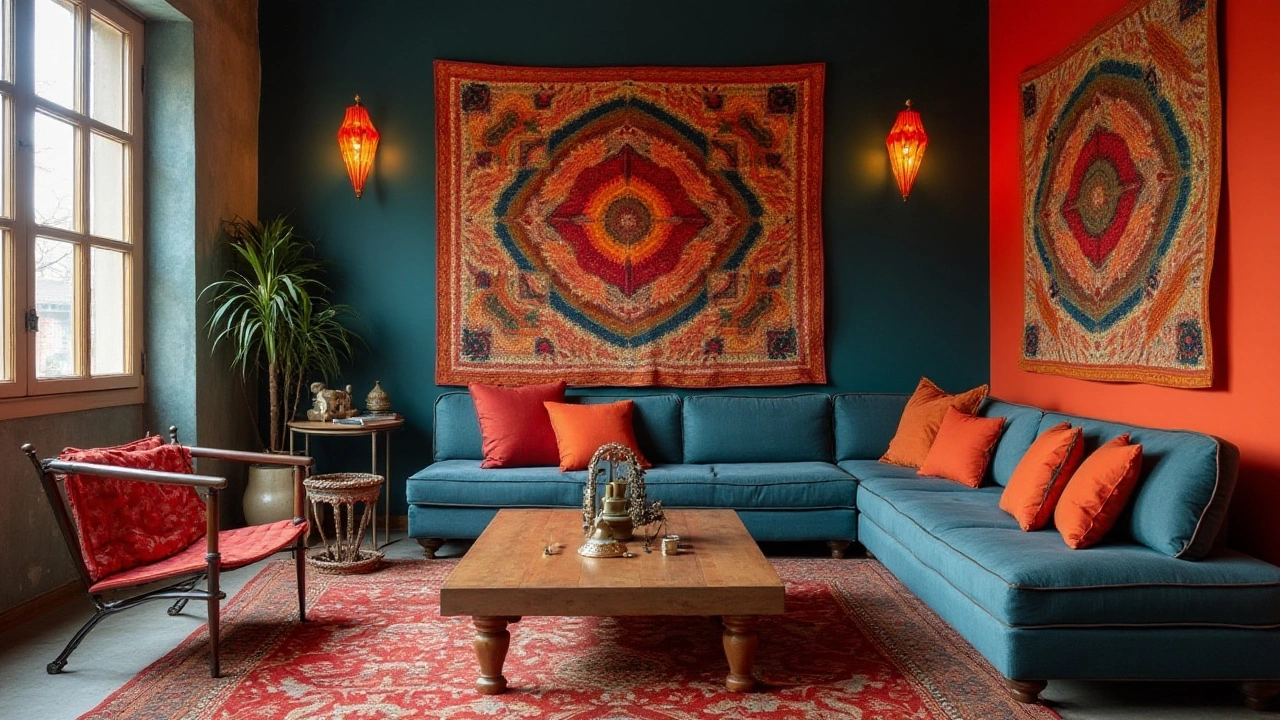
Mastering the Art of Lighting
Lighting often plays a pivotal role in shaping the living room decor, influencing mood, functionality, and aesthetics. It serves more than just the primary purpose of brightening a space—it's about creating depth and warmth. The enchantment of lighting lies in its layers, the harmonious blend of ambient, task, and accent lighting. These crucial layers work together to transform any living room into a dynamic yet cohesive area.
Ambient lighting, often considered the 'general lighting,' is the base layer which ensures the room is evenly lit. Popular techniques include overhead fixtures such as chandeliers, pendants, and recessed lighting. It's essential to consider the structure of your living room while choosing ambient lights—ceilings height, window placements, and room size can significantly affect shadow play and light distribution.
Task lighting comes next, focusing on practical illumination for activities like reading or crafting. This is where floor lamps beside seating arrangements, or table lamps on side tables, become indispensable. They provide localized light where detailed work is required, allowing you to tailor the room to lifestyle needs. In fact, studies have shown that proper task lighting can reduce eye strain significantly, which is vital for maintaining wellness in spaces where screen use is prevalent.
Accent lighting is the craftiest layer; it adds drama and draws attention to specific elements, such as artwork, architecture, or prized collections. Consider wall sconces or LED strips under shelves to highlight these features subtly. Aesthetic placement of accent lights can bring a sense of theater to the room, enriching the overall interior design.
"The right lighting elevates everything from mood to materials, breathing life into your interior 'playbook,'" says renowned designer Nate Berkus.
Choosing light bulbs that mimic the color temperature of daylight (around 5000 Kelvin) can offer the most natural atmosphere, but experimenting with various hues and brightness levels allows for versatile room settings. Dimmable lights offer a convenient way to shift from bright and welcoming to intimate and soothing.
In the realm of smart home technology, integrating smart bulbs or automated lighting systems can have a substantial impact on both ease and efficiency. These systems allow you to alter the room's ambiance with a simple voice command or tap on your smartphone, adjusting to your mood or time of day seamlessly.
Here’s a handy table to help distinguish between types of light bulbs:
| Type | Lifetime (Hours) | Color Temperature (Kelvin) |
|---|---|---|
| LED | 25,000 | 2,700–6,500+ |
| Compact Fluorescent (CFL) | 8,000 | 2,700–6,000 |
| Incandescent | 1,000 | 2,700–3,000 |
Incorporate dimmers or select lighting gadgets that you can control from afar to fit the vibe of any occasion. With such attention to detail, your living room can transition beautifully between a luminous daytime haven and a serene evening retreat. Deliberate lighting choices thus become more about designing experiences rather than just illuminating the space.
